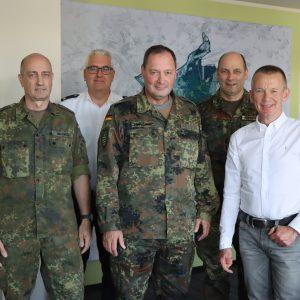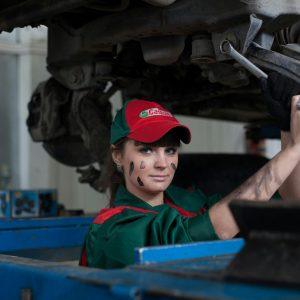ADVERTISING
A contribution by Sophia Miltenberger for the project "What's going on?!" From students at the H_DA
Public transport should be accessible and safe for everyone. But also in Darmstadt, women and queer people report that they themselves remain vigilant in the broad day.
Often it is not acute threats, but unpleasant incidents. Someone sits too close, starts a conversation despite headphones or stops stare. Too often, strangers exceed the personal distance at train stations or stops or approach further despite the clear signals.
Such experiences are usually not relevant under criminal law and yet they leave traces. That is why the Heinerliner was an alternative for many. Since February, the HEAG Mobilo shuttle service has only been driving in the evening, at night and on weekends. The reason for this is the tense budget situation. "It was important to us to receive an offer despite everything," explains Paul Georg Wandrey (CDU), the city's mobility director.
Security on paper - uncertainty in everyday life
But is that enough? According to police crime statistics, Darmstadt is not considered particularly dangerous in Hesse. The police headquarters South Hesse also announced on request that the public transport in Darmstadt is not a major crime from the police point of view. Even if there are always crimes there.
But statistics don't tell everything. If you ask women or queer people, stories of crossing border are not uncommon. The police also admit: "The subjective feeling of security is usually not reflected in the objective figures. Headlines about harassment or violence often lead to uncertainty - even if the actual risk is usually overestimated."
"I am not concerned with spreading panic," says Lara (20), student of social work at the Darmstadt University of Applied Sciences. "But the public space is not the same for everyone. And you can feel that in broad daylight. I often use the Heinerliner at night. Above all, since I experienced two situations in Luisenplatz in which I was really afraid. But it was also calming to know during the day that I can call the Heinerliner."
New measures - and new fears?
In mid -March, the city started the "Safe Downtown" immediate program. It includes increased police controls and a weapon and knife ban zone in public transport. These measures should ensure more security. But they also make more visible. "Due to the higher number of people, high -frequent areas such as Luisenplatz offer more opportunities to commit crimes," explains a spokesman for the police headquarters. Notes about folding knives in the train and drug finds at stops are isolated cases, but they add up in perception. Anyone who feels uncomfortable in such messages will find confirmation as a calming.
„I think it is important that the Heinerliner exists - even if I do not use it myself, ”says Samuel (26), engineering student at TU Darmstadt.“ I am big and strong, I rarely feel threatened. But when I think of my girlfriend, I wish that she could also use the Heinerliner during the day. I have seen more often how women on the train are underrled. ”
Mobility with restrictions
Of course: Women take a bus and train in many major cities - and arrive safely. But it is just as real that many consciously avoid local public transport. If you can, you can pick up, look for detours or plan your activities in such a way that you are at home before dark.
It becomes particularly difficult for those who have moved to a new city for studying or training. Without the proximity of family and long -time friends, a safety net is missing. Anyone who has no one that can be contacted in an emergency prefers to avoid potential risks. For many young women, this means to cancel spontaneous meetings or not to go out in the evening. Not because it would always be dangerous, but because they just don't want to take the risk.
The Heinerliner was also an important part of everyday life for people with physical restrictions. Some vehicles were converted specifically for wheelchairs in 2022. In addition, the virtual stops were often closer than the regular bus stops. Since there has been no barrier -free taxi in Darmstadt so far, the shuttle was the only flexible way for many to move independently during the day.
Alternatives?
A taxi? For many priceless - especially with regular use. If you still want to stay flexible, you can switch to providers like Uber. The app shows drivers: inside with reviews and vehicle type. You know who picks you up. If you are flexible, you can often drive cheap via the savings option.
The police also give tips for more security: "Sit in the ÖNPV near the drivers: inside or in a car with many people. When you are bothered, react loudly, draw attention to others - and ask for help."
Security requires structures that meet different realities of life. Therefore, the Heinerliner is missing by many.
Sources:
Contribution picture Photo: HEAG Mobilo
Press office of the South Hesse police headquarters
www.heagmobilo.de/Pressem reports
www.presseportal.de/blaulicht/r/darmstadt
This article was made as part of the project "What's going on" - a teaching editorial team of students from the online journalism course at the Darmstadt University of Applied Sciences (H_DA). Da.news supports the project and publishes selected articles on its platform. Further information and texts are available here and on: www.was-da-los.de












